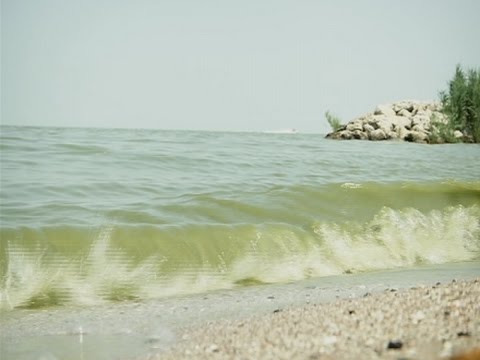Posted August 13th, 2014 in
Healthy Waters
The recent contamination of drinking water in Toledo, Ohio brought the risks of algal blooms center stage and raised serious concerns for the future. Questions on everybody’s mind are what are toxic algal blooms, what causes them, and what can we do? Michael Brennan, IISG’s water quality outreach specialist, has some answers:
Regional scientists have been concerned about algal blooms like the one we saw a few weeks ago for some time. Its unique conditions make western Lake Erie particularly susceptible to algae blooms, both toxic and non-toxic. Warm temperatures, shallow, slow-moving water, and excessive nitrogen and phosphorus concentrations create optimal conditions for algae to thrive during summer months.
Let’s step back a bit. Algal blooms are essentially overgrowths of algae triggered by excess concentrations of nitrogen and phosphorus carried in stormwater runoff from lawns, leaky septic systems, golf courses, and agricultural fields to nearby waterbodies. The severity of a seasonal algal bloom is directly related to annual rainfall accumulation and the number of severe rainfall events
Non-toxic blooms occur all over the Great Lakes. Occasionally, the algae associated with blooms—a cyanobacteria—releases a toxin known as microcystin. This is the toxin responsible for contaminating the drinking water of over 500,000 people in the Toledo area.
But even non-toxic algal blooms are harmful. When rapid algal growth dies off, decomposition sucks oxygen out of the water, depriving freshwater organisms of the oxygen needed to survive. Decomposition also slowly releases nitrogen and phosphorus back to the water column, setting the stage for the cycle to start again next season.
There are no quick fixes in Lake Erie or any of the other lakes. But there are things we can do. Better stormwater management through green infrastructure is key. Unlike impervious surfaces, the plants and trees used in green infrastructure can absorb water and filter out pollutants before it reaches a waterbody.
Individuals can help prevent algal blooms as well. Homeowners and gardeners can adopt natural lawn and landscaping practices that conserve water and reduce stormwater runoff. Most of these practices are simple and cost-effective, like applying nitrogen fertilizer only in fall, removing weeds by pulling and hoeing, and limiting watering to the mornings and evenings.
**Photo courtesy of Ohio Department of Natural Resources



